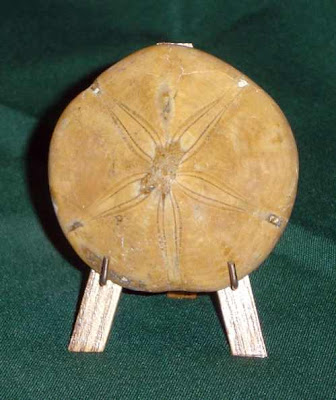Echinoids (sea urchins) first appeared in the early Palaeozoic, and became common fossils from the Jurassic onwards, during the last 200 million years. Eupatagus, illustrated here (length 60 mm), is a genus of Cenozoic age, so locally common in sedimentary rocks (especially limestones) deposited within the very last 65 million years.
And example below found from another website.
















2 comments:
Having lived in Texas for 23 years, I had a lot of fun collecting fossils along the way. Nothing like your brother has found, but fun none-the-less. Great blog.
I know just where he should go to find unbelieveable treasures...a walk in a draw delivers fossils galore..and if you're lucky, you'll hear the mockingbird delivering it's soliloquy..
Post a Comment